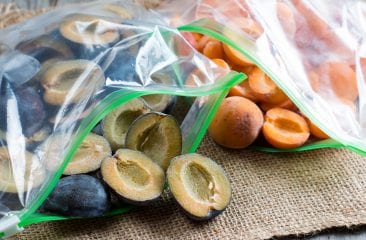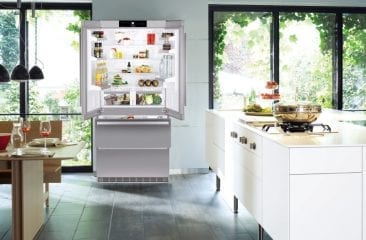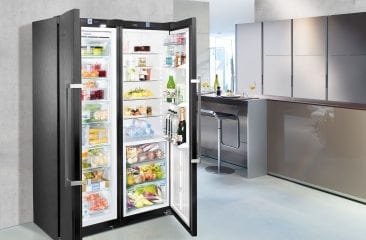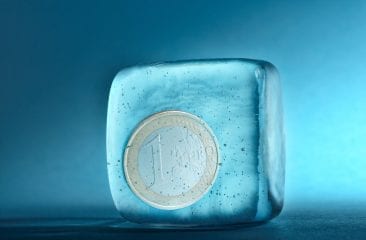Freezing food without the usual freezer bags and plastic boxes? Is that possible? Here are some tips on how to manage without plastic when freezing.

Dear reader, are you one of those people who would like to stop, or at least reduce (as far as possible), the use of plastic in your everyday lives, whether due to health worries or concern for the environment? This post will show you that, while not easy, this is certainly possible, and we will specify the advantages and disadvantages of the various alternatives. However, before that, here’s a few general comments on the subject of “freezing”.
In order to keep food fresh, the right packaging material is critical. In general, you should only use materials which retain the moisture present in the food. What many people do not realise is that use of the wrong packaging may cause the frozen goods to dry out more quickly at low temperatures. The consequence of this is the so-called “freezer burn”. So, what’s to be done?
Risk of freezer burn from wrong packaging

Airtight sealable packaging is most suitable. While the food is being stored, the removal of air and careful sealing of the packaging protects it on the one hand from drying out (freezer burn) and oxidation (ingress of oxygen), and on the other from the penetration of microorganisms. Use of paper, paper bags or cardboard as packaging material for frozen food – as can be found on some sites offering advice on the internet – is therefore only partially recommended. But more about this later…
Optimal features of frozen food packaging
1. Food safe This is indicated by the “food safe symbol” or the “glass and fork symbol”.
2. Cold resistant The packaging must not become brittle or porous, even at low temperatures.
3. Heat resistant and dishwasher safe
This is important if the packaging is to be used multiple times.
4. Air tight
Packaging should provide protection against the penetration of oxygen, moisture or aromas.
5. Odourless and tasteless
6. Resistant to fats, acids and alkaline solutions
7. Tear resistant
8. Adaptable to the size of the frozen goods
9. Suitable for particular defrosting processes. (Boiling water, microwave or oven)
10. The right size and shape. If the packaging is flat, the cold penetrates quickly through to the centre of the packaging’s content.
The best alternatives to plastic

1. Glass jars or bowls
Puree, compote, mash, soups or sauces and even fresh herbs and berries are suitable for freezing in jars with screw tops or glass containers. Our tip: When freezing liquids, jars must only be ¾ full otherwise they crack. Glass bowls with lids are also suitable for freezing food.
2. Stainless steel containers and cans
As with freezing in glass, liquid food should also not be filled up to the rim in stainless steel containers. The ¾ rule also applies in this case. The lid should not be sealed tight until the food is frozen. The advantage of stainless steel containers and cans over glass is that they cannot break.
3 Seasonal food in the freezer compartment without packaging
Depending on the food, you may also be able to dispense with packaging entirely when freezing, for example in the case of rhubarb or berries. Our tip: Just give it a quick clean before freezing and find a suitable space in the freezer compartment. However, this method is probably not advisable if you like to have a well-organised freezer compartment and don’t want frozen goods lying around loose. Another disadvantage is that this method is best suited to very short-term storage because it also causes the food to dry out. However, for longer-term storage in the freezer compartment, the food must always be packaged appropriately. This is because the food will not survive over the long term without its “protective layer” (see points 1 and 2 above).
The following packaging is unsuitable for freezing

Cardboard, paper, soft cloth or cotton bags make poor packaging material in the short term because they fail to meet the criteria referred to above (points 1 to 3).
With these materials, the moisture can escape from the food and collect as ice in colder sections of the freezer. This loss of moisture may cause the frozen food to become tough and dry.
Conclusion:
• Glass, glass containers with screw caps or sealable stainless steel cans are good alternatives to plastic boxes. • Cardboard, paper, soft cloth or cotton bags make poor packaging material for frozen food. • If you take shortcuts with the packaging, then you have to accept food with freezer burn.
Do you have any questions or comments about this post? Write to us! Simply use the comment function below this post or join in a discussion with us on Facebook. And if you enjoyed this post, why not subscribe to our newsletter or share it on Facebook





